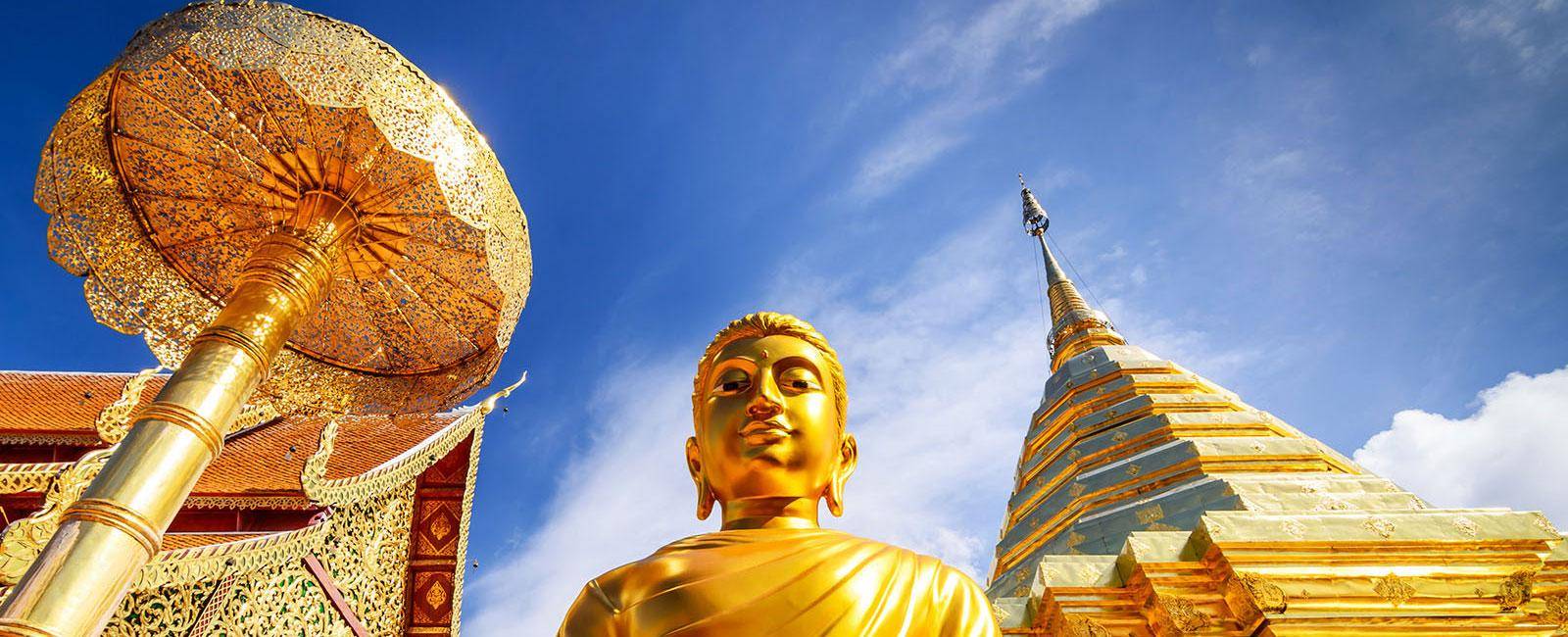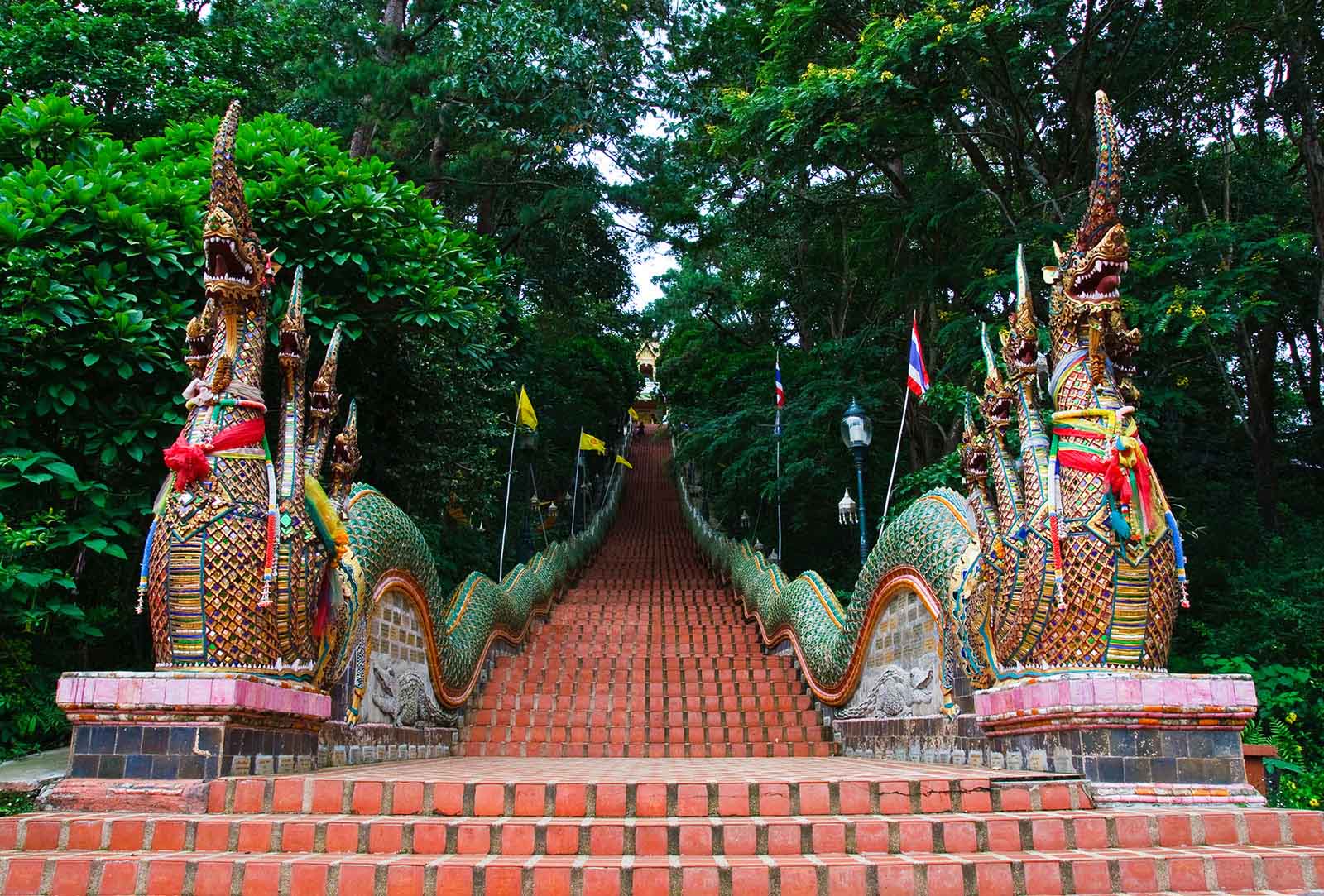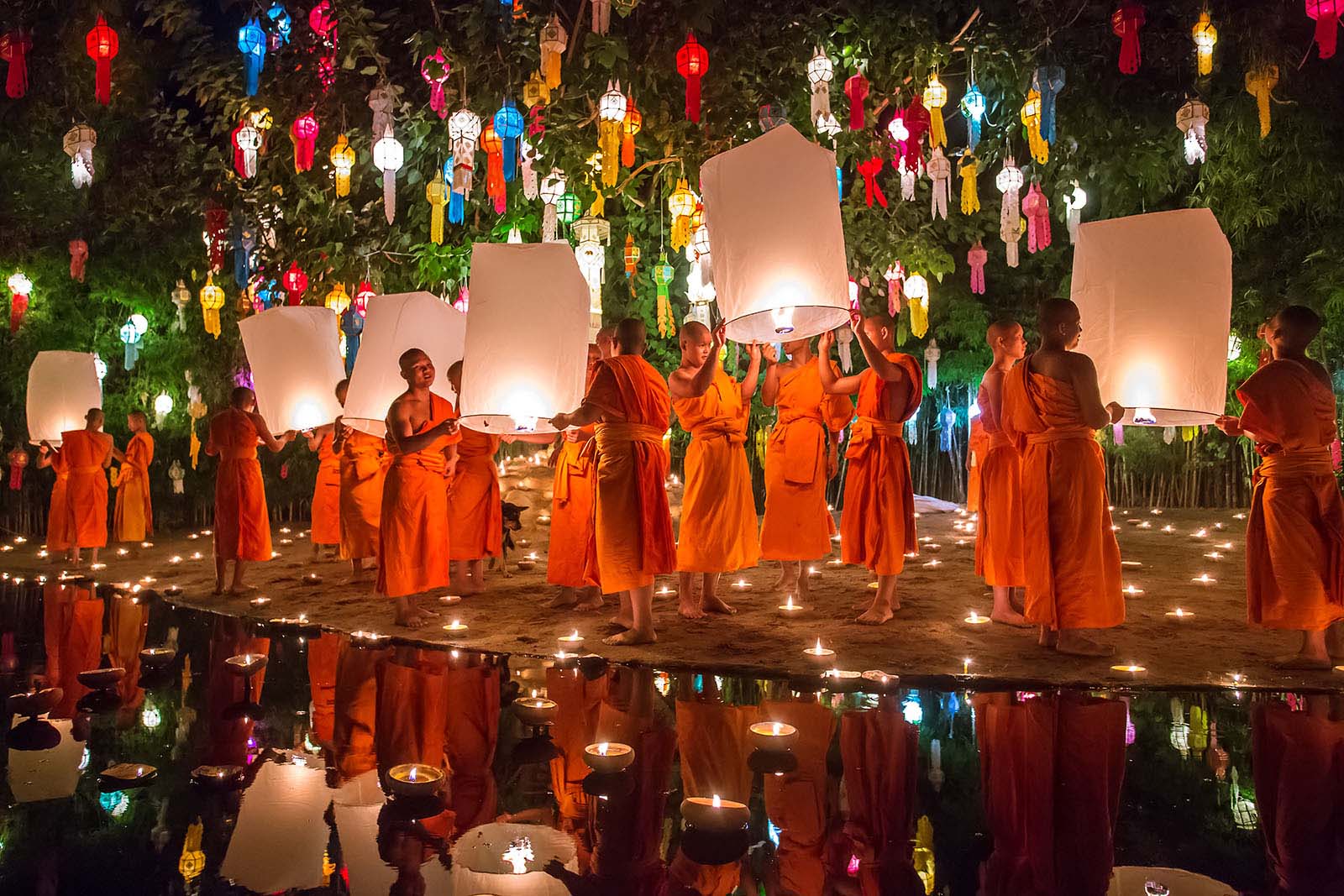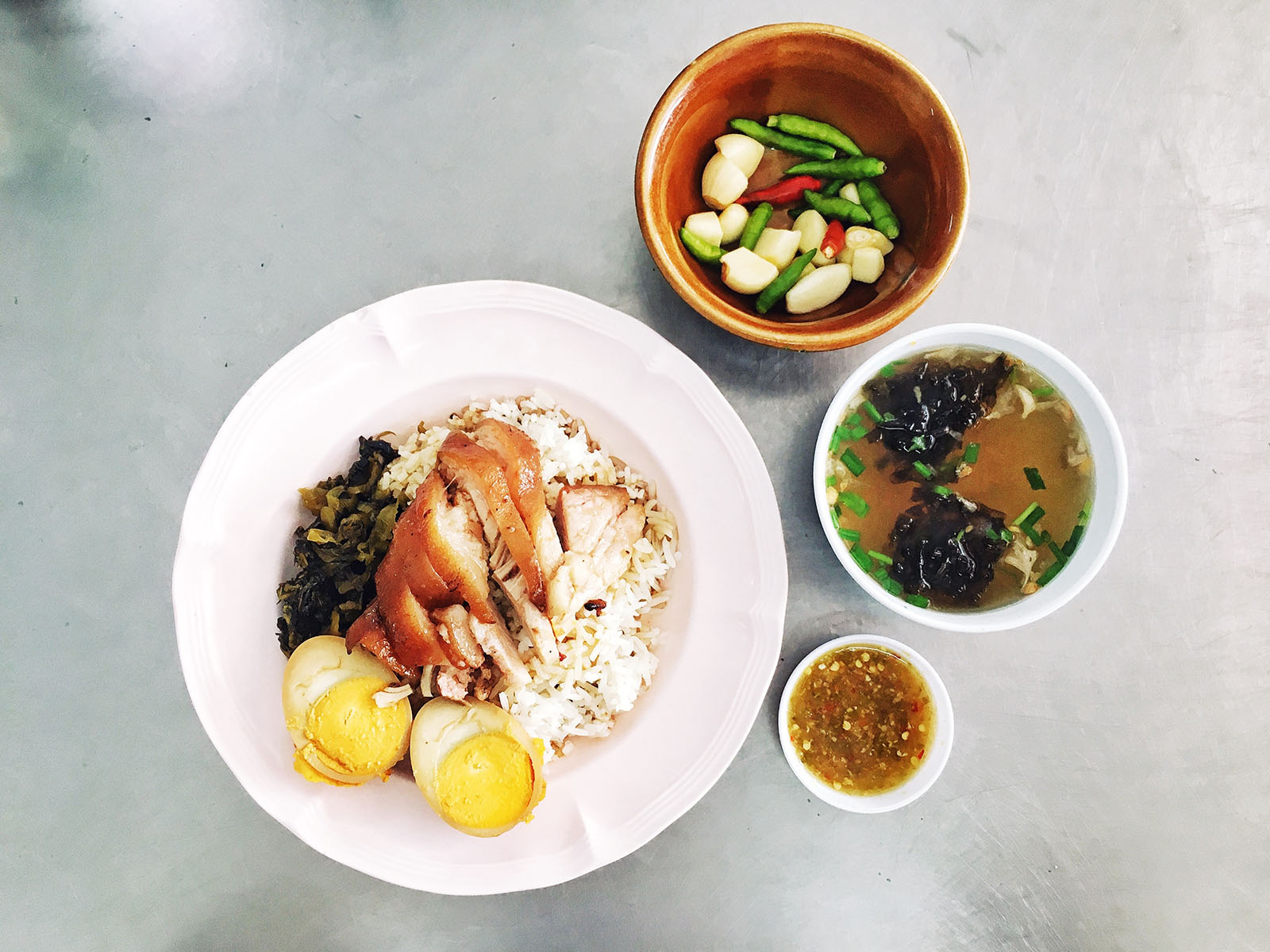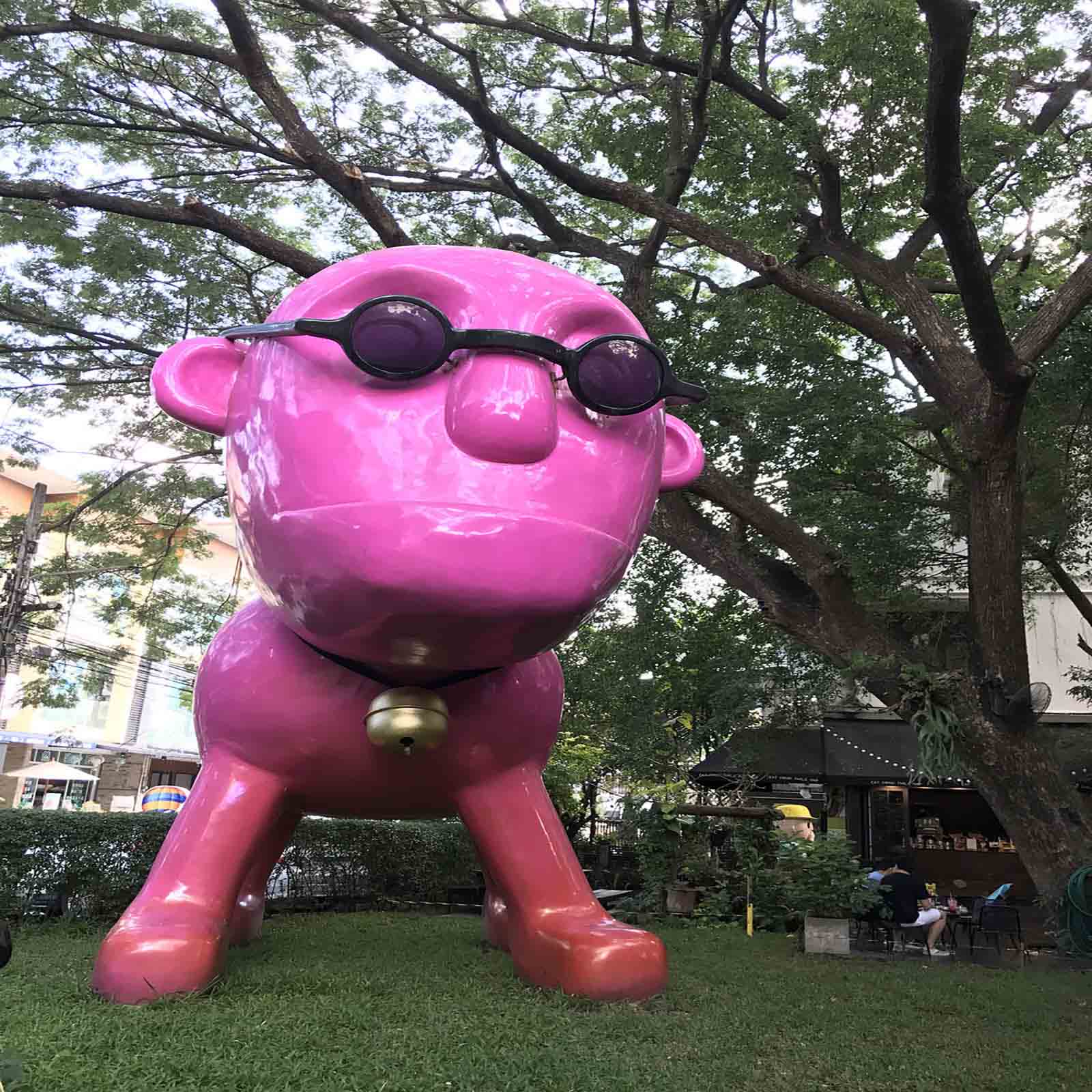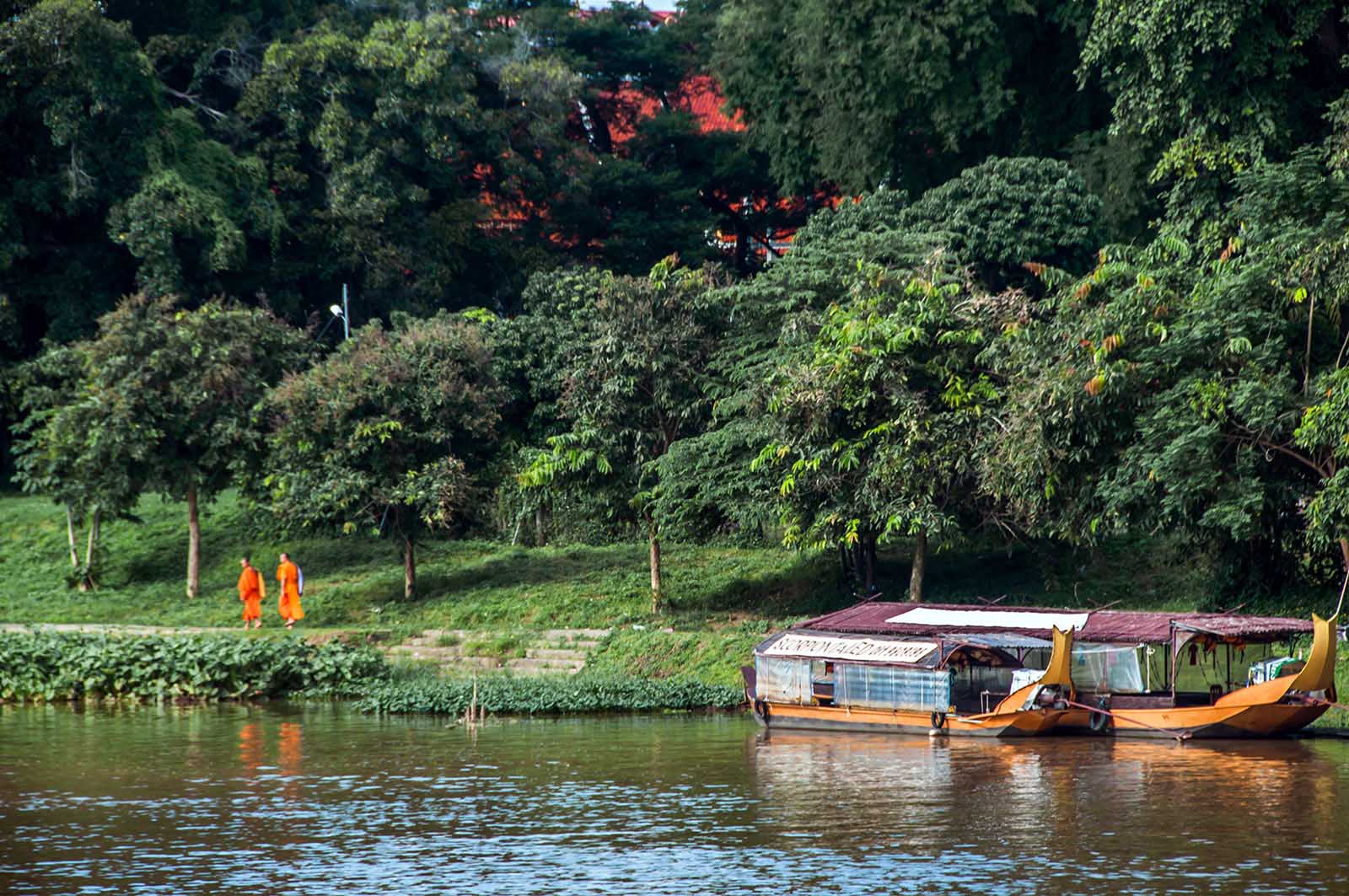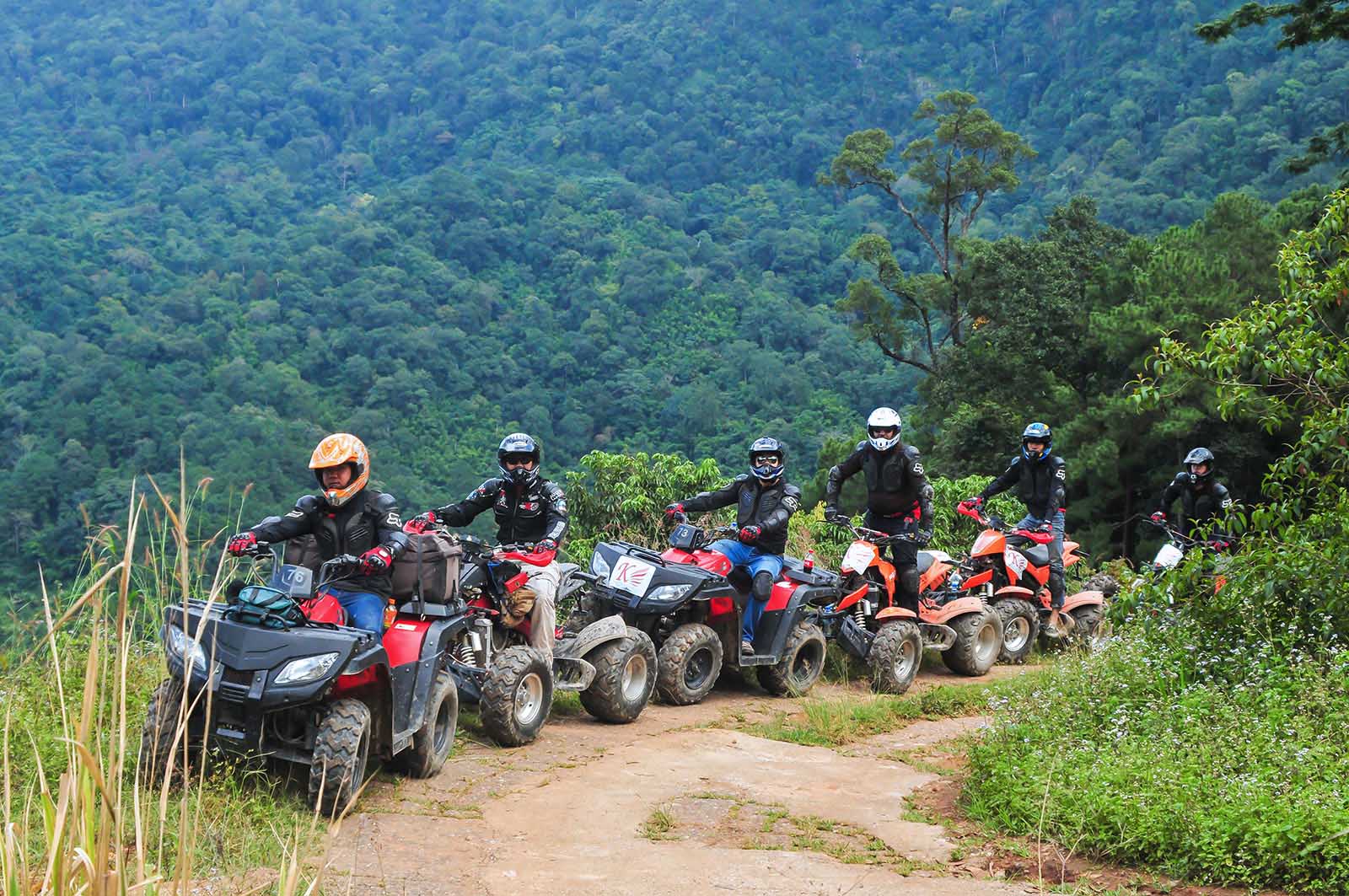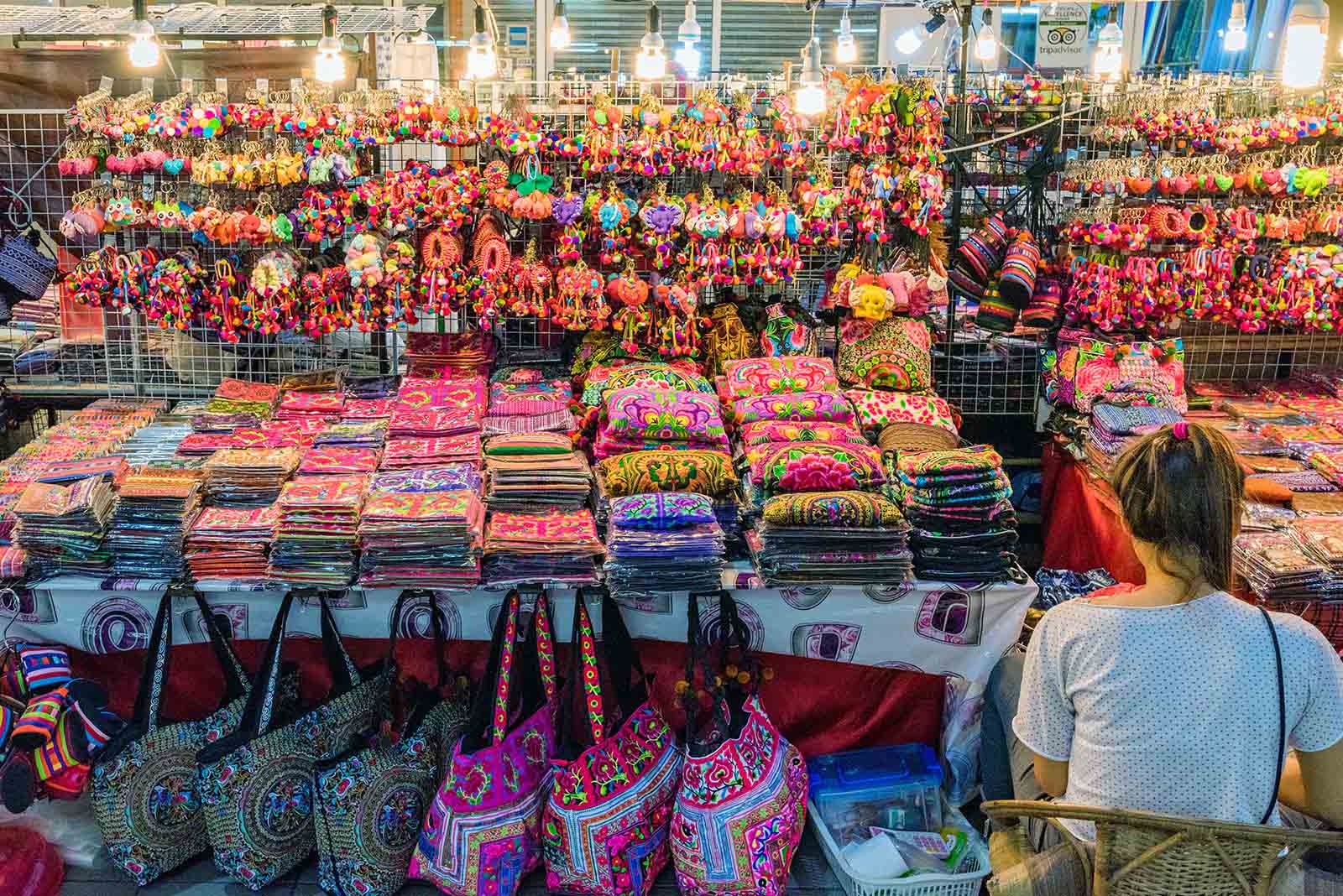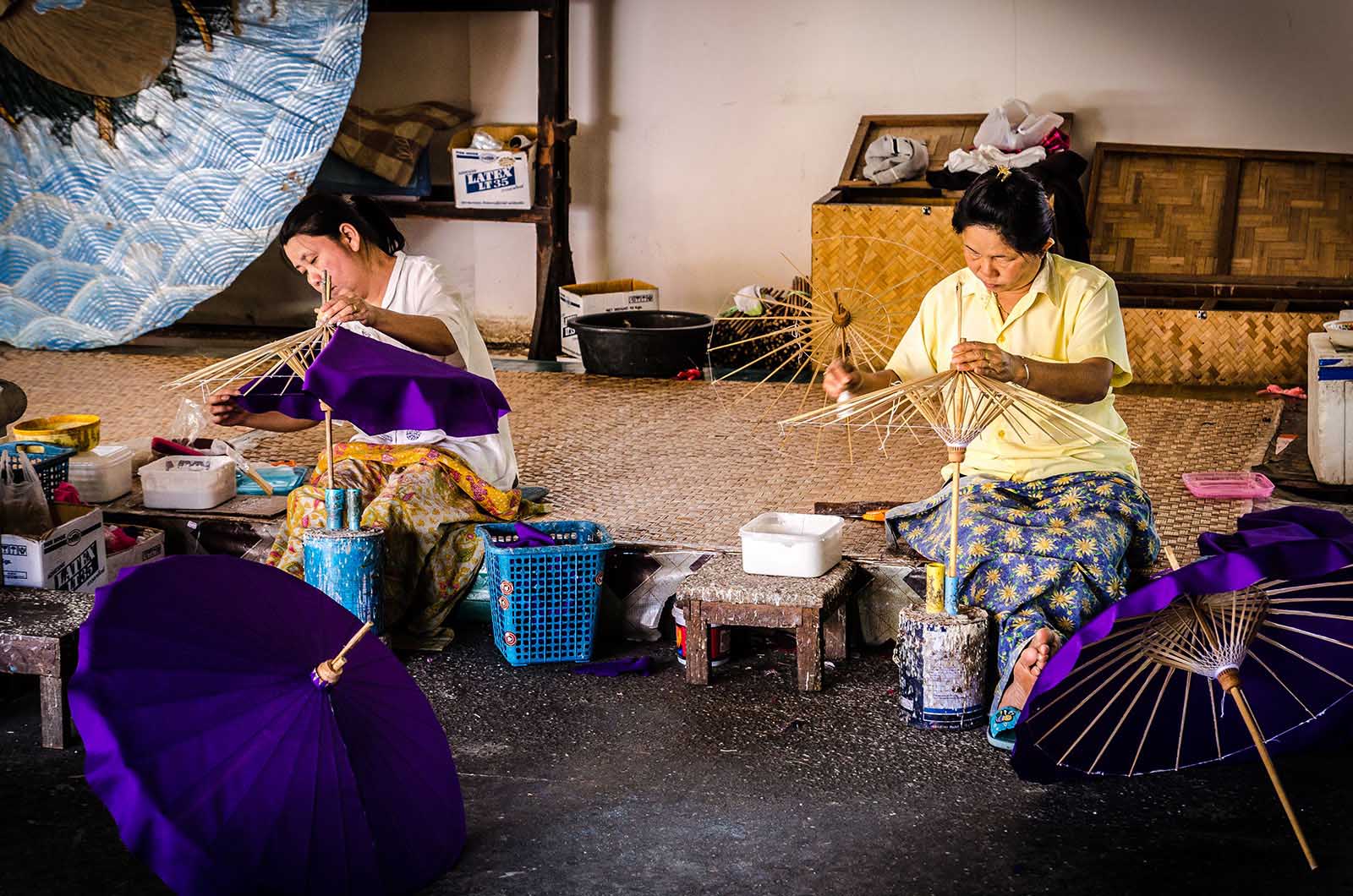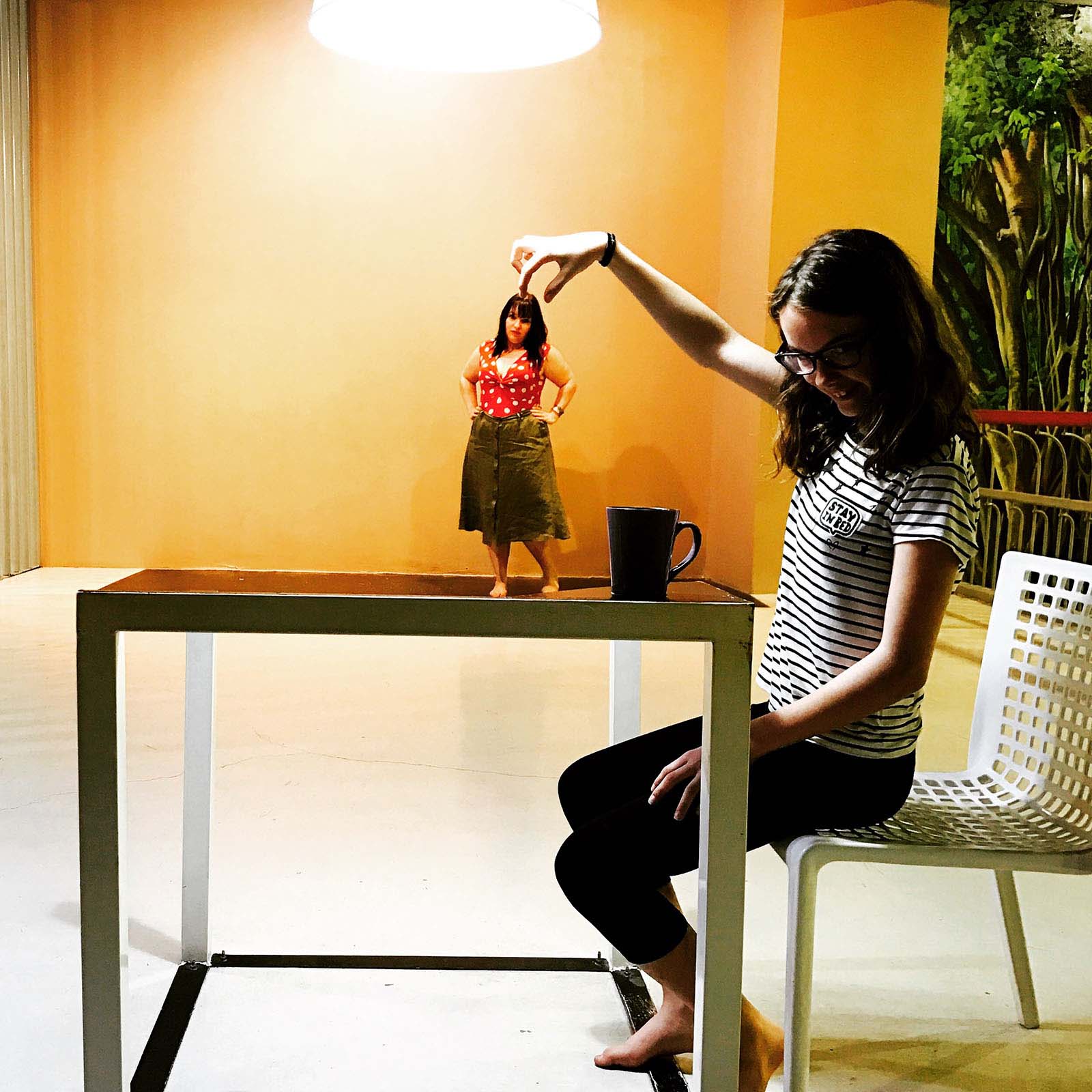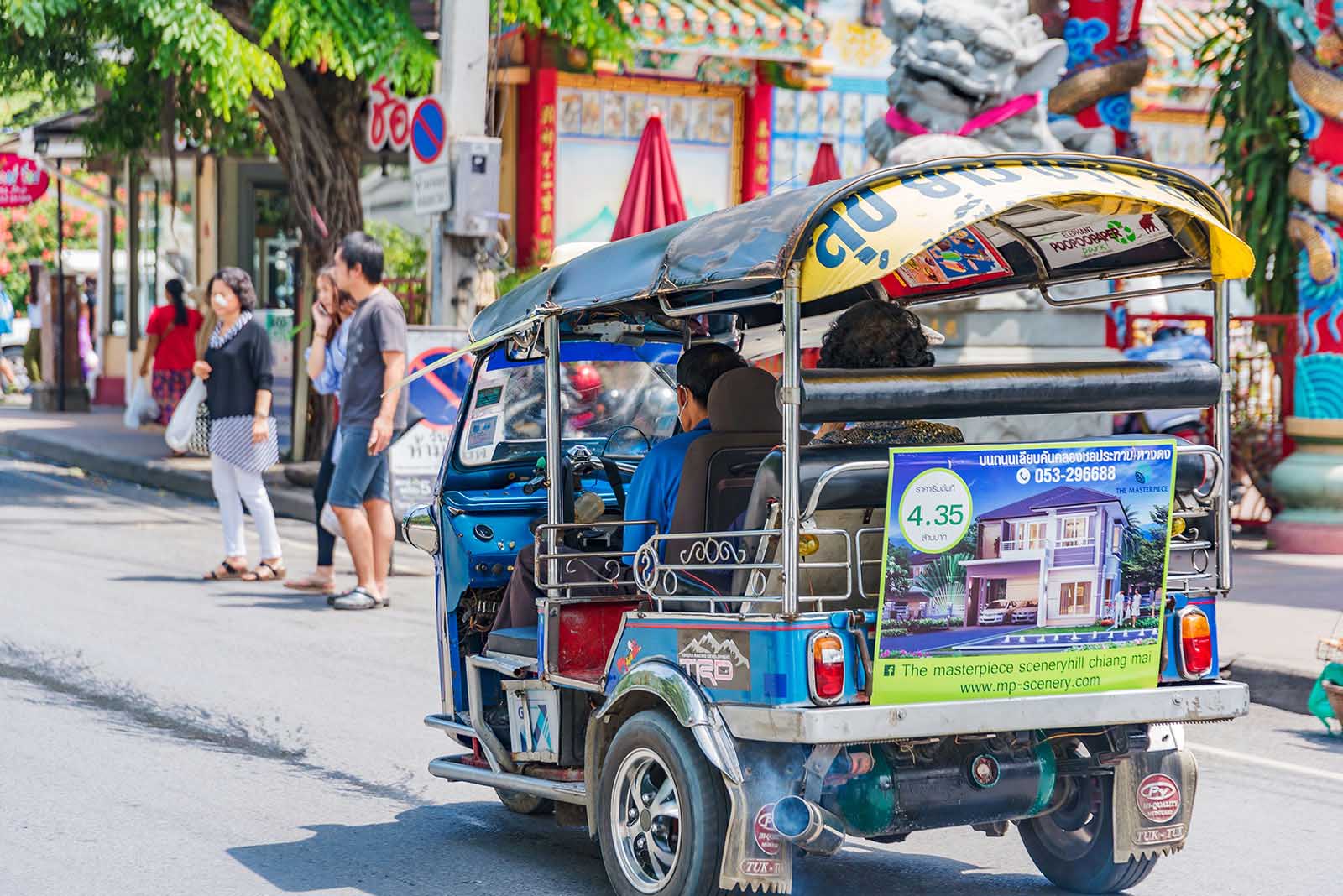
Like a queen overseeing her subjects from her throne, Chiang Mai hovers high in Thailand’s north, far away from the south’s madness. Originally conceived for her trade route to China, the northern capital remains largely independent from the rest of the country. Compact, walkable and friendly, Chiang Mai has all the cultural bases covered with its food, ruins, temples, scenery, elephants, adventure, crafts and continuing traditions.
Looking to tackle Thailand's mountainous north region? Here are ten ways to start your travel planning research.
1. Take a tuk-tuk
Flying through the city by tuk-tuk is the most invigorating way to zip through the city’s labyrinth. Haggling is part of the deal with prices ranging between 60 and 100 Baht (about $2 - $4). Just go with it as you really can’t put a price on the entertainment factor, as I discovered when the theme song from the movie Frozen blared from our tuk-tuk’s speakers while we bunny-hopped to our destination. I made a note to never ‘Let it (the handrail) go’ again. Decorated in all forms of gaudy, many double as the family transport with school and supermarket drop-offs as part of the journey and when the sun sets some transform into mobile, albeit seated, discos. For a more sedate experience join the locals on the red pickup trucks called ‘songthaews’.
2. Ancient Temples
There are more than 300 temples in Chiang Mai and its outskirts, with a dozen stand-outs of historical or architectural significance within walking distance of each other. The Old Town, once the capital of the Lanna Thai Kingdom, lies within a square of ancient brick ramparts edged by a moat. It is one of the most congested parts of the city with motorbikes, cheap massage joints and backpackers but the main attraction is its temples, such as Wat Pan Tao and, gilded in fine stucco, it is deemed the most beautiful of all.
Within the ancient walls of the Old Town, Wat Phra Singh dates back to 1345. Although three main structures vie for attention, it’s hard not to gravitate to the shimmering Kulai Chedi pagoda. However, the real treasure – the famed Lion Buddha image known as Phra Singh – lies within the small chapel Wihan Lai Kham. I could have spent hours admiring the internal walls of Lai Kham assembly hall decorated with exquisite murals and stucco decorations depicting the lives of the locals from the late 19th century.
After all that admiration of the Lanna temple architecture, markets and food stalls, we indulged in a foot massage in the grounds, something we also would have liked after climbing the Naga Serpent Staircase to 14th century Wat Phra That Doi Suthep, considered the most significant temple in Chiang Mai and still a working monastery. The fact there’s a tram as an alternative route to the 300 plus steps, lined by serpent (naga) statues, gives some indication of the burn factor. The views from its hilltop location are impressive, particularly at sunrise. In the meantime, and perched 1676 metres above sea level, the temple on Doi Suthep is a majestic backdrop to the city.
3. Dining out
As they say, when in Northern Thailand… you’ve got to try the local cuisine. Lemongrass, chilli, turmeric, lime and coconut enhancing noodles, curries, pork, shrimp and fish doused with the local pepper sauce are just some of the flavours of the north.
The local speciality Khao Kha Moo, stewed pork leg served over rice with egg and spices, is readily available, especially from the lady in the cowboy hat at the Chang Puak night market. Be prepared to join the queue since chef, writer and TV presenter, the late Anthony Bourdain paid her a visit on his program. Lively any night of the week, the open-air market has a wide range of local and international dishes, as well as the ubiquitous pad thai noodles, noodle and meat filled omelettes, larb (or laab, a spicy mince salad), satays, seafood, crispy fried insects, thankfully washed down with beer.
In hipster haven Nimman, short for the district located around Nimmanhaemin Street, the waft of wood-fired pizzas from Italian restaurant Why Not? lured us in for their home-made pasta, imported cheeses, antipasto and Italian wines. Equally aromatic is the barbecue chicken at Cherng Doi. Served with sweet and sour tamarind sauce, the spit-roasted chicken is available only for a few hours in the middle of the day until it is sold out and they shut up shop.
Chiang Mai’s nightlife is a mini version of Bangkok’s trappings of vice and there are plenty of bars to indulge. The pub on the first floor of the Night Bazaar is wonderful for bluesy renditions and its people-watching vantage point.
The strip along Charoenrat Road is a great place to eat, drink and watch expats behaving badly or, for a less salacious night out, the Riverside Bar has a pub vibe and Thai food.
The Khao noodles and tom yum gung soup at the award-winning Gallery Restaurant housed within an antique building and riverside vantage point has romance in spades.
4. Coffee hot spots
Chiang Mai is a mecca for digital nomads, their caffeine-fuelled furrowed brows lit up behind laptops in cafés all over the Nimman area, popular for their fast WiFi, tasty food and coffee. The rotating art-space at Gallery Seescape provides plenty more to look at than a row of laptops; Ristr8to serves gourmet coffee around the clock, and the all-day brekky and cute garden at Blue & Rustic often extends into lunch. The oversized pink dog statue in the garden at Iberry is enough to inspire a lengthy linger over their home-made ice creams.
5. River cruising
Weaving through the city and past the Old City walls, several tour companies traverse the Mae Ping River languidly passing by teak houses, fancy hotels and kids frolicking on the banks. Normally a relaxing rural experience, ours took an exciting turn when our endearing guide channelled Elvis. ‘Jailhouse Rock’ bellowed out of the megaphone as our scorpion-tailed boat pulled up at a spice farm for an interesting tour followed by a tasty treat of mango on sticky rice. Dinner cruises are also available.
6. Off-road adventure
Quad biking through the jungle seemed like a good idea until discovering the need for more upper-body strength than we possessed to control the powerful beasts slipping through the mud. An abundance of experienced drivers was immediately summoned to save us damsels in distress, looking like bedraggled pink garbage bags in our provided raincoats. Once the controls were in someone else’s hands I began to relax and enjoy myself for the next couple of hours over the 40km trail.
7. Treasure hunting
Chiang Mai is known for its local crafts and offers an abundance of silk, silver, lacquerware, wood carvings and hilltop tribal crafts. The Night Bazaar opens at sundown until 11pm and is a treasure trove of goodies including hand-made bags, clothing and bedding you won’t find in the shopping malls.
Sunday Walking Street Market stretches for about one kilometre and sells hand-crafted items, while Wualai Walking Street opens on Saturday nights and, as it’s less busy, there’s more opportunity to browse and haggle.
The historical riverside shopfronts along a portion of Charoenrat Road specialise in high-end Lanna art and crafts; Nimman has a lot of quirky galleries and boutiques; the Maya Lifestyle Shopping Centre and the open-air lifestyle mall Kantary Terrace are both a short walk away for well-priced high-street fashions.
Colourful umbrellas are everywhere in Thailand, mainly to shelter from the relentless sun, and just a few kilometres from the city Bor Sang Village is the centre for hand made umbrellas, ranging from the cocktail variety to sun-shading parasols. Meander among open-sided wooden workshops to watch the umbrellas being made and the annual Bor Sang Umbrella Festival is a highlight.
8. In the picture
Reality as we knew it was altered at the Art in Paradise museum where we ‘became’ part of the artworks in this interactive exhibition, at least for our own cameras. My daughter braved a shark attack, popped inside a snow globe, floated through Venice, played hide and seek with a massive kitten, glided on a paper plane and jumped off tall buildings in a single bound, all part of a creative illusion.
9. More than massage
Receiving a Thai massage is a bit like doing yoga while someone else does all the work for you, well at least on first impressions. Generally speaking, no oil or long soothing strokes are used and, after changing into loose-fitting pyjamas and directed to a floor mat, arms, fingers, toes, legs, hips and shoulders are contorted into all kinds of positions compliments of the masseuse’s fists, hands, feet, forearms, elbows and knees. A calming tea completes the experience before floating back out into the city throng.
The Signature Makkha Thai Massage at Makkha Health & Spa combines acupressure, massage and yoga into the treatment while the Srimantra Signature Massage at Srimantra Spa combines traditional Lanna Thai massage with an aromatherapy oil massage. Fah Lanna Spa has a signature Wisdom Massage which embraces elements of traditional Lanna culture such as Thai dance into the treatment.
10. Care for the elephants
Saving the best for last, Lanna Kingdom Elephant Sanctuary is one of the few ethical elephant parks in the country that allows rescue elephants to roam free in peace. History declares that Thailand’s trade routes were originally trekked by elephant because there was no other mode of transport but today there’s no excuse for plonking your derrière on the back of an elephant for the sake of novelty; their backs aren’t designed to carry hordes of tourists touting selfie sticks. Besides, it’s way more fun to get dressed up as a mahout (elephant carer), prepare their food and give them a mud bath in their open-air spa. Be warned, hanging out with these magnificent creatures is a life-changing experience.
GETTING THERE
CREDITS

